Top 15 Things China Invented First
 The Chinese people encompass a culture that is steeped in tradition.
According to the book Ancient China The Chinese people encompass a culture that is steeped in tradition.
According to the book Ancient China by Arthur Cotterell, Chinese people first emerged onto the global scene around 6,000 BCE. Chinese culture is the longest continuous civilization and
has the
oldest written language. Over more than thirty millennia, many great Chinese
minds flourished and prospered. Many of these inventions were either adopted and
modified by Europeans with their own twist.
by Arthur Cotterell, Chinese people first emerged onto the global scene around 6,000 BCE. Chinese culture is the longest continuous civilization and
has the
oldest written language. Over more than thirty millennia, many great Chinese
minds flourished and prospered. Many of these inventions were either adopted and
modified by Europeans with their own twist.
The need for these inventions arose from many key historical and cultural
factors. Various factions within the ancient Chinese empire waged war against
one another, which caused the country as a whole to become divided. The
dynamic nature of ancient Chinese culture helped guide the way to innovation,
inspired by the drastically changing environment of ancient Chinese culture.
15) Fiat Currency
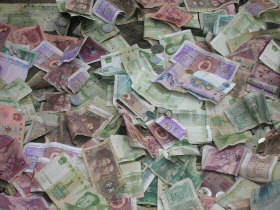 Fiat
currency, or fiat money, means currency that derives its value from government
regulation or law. As
with most ancient societies, the economy in China was first based around the barter
system and the exchange of one good for another. While this system was and is still used in
various parts of the world, wealthy merchants and lords desired a more efficient
method. This pushed for the creation of the first paper money in history around
the seventh
century. The first currency evolved from bank promissory notes, and early
currency is referred to as commodity money because currency was valued by the
amount of a particular commodity that could be purchased with it. Fiat
currency, or fiat money, means currency that derives its value from government
regulation or law. As
with most ancient societies, the economy in China was first based around the barter
system and the exchange of one good for another. While this system was and is still used in
various parts of the world, wealthy merchants and lords desired a more efficient
method. This pushed for the creation of the first paper money in history around
the seventh
century. The first currency evolved from bank promissory notes, and early
currency is referred to as commodity money because currency was valued by the
amount of a particular commodity that could be purchased with it.
China's original paper money was commonly referred to as "jiaozi." Separated
by regions, jiaozi rose to prominence during the Song Dynasty. A potential
contributing factor to the success of this currency was a shortage of
copper that occurred during this time period. Copper was used to create metal
coins for currency, and were used alongside the barter system. The
ingredients for simple paper include hemp waste, tree bark, bamboo,
and other plant fibers. These substances were much more abundant than the
dwindling supply of copper. Jiaozi was a much more affordable to produce than
copper coins which are pictured below. In the
eleventh century, a national form of paper currency unified the regional
versions of jiaozi.
Ancient Chinese Coins
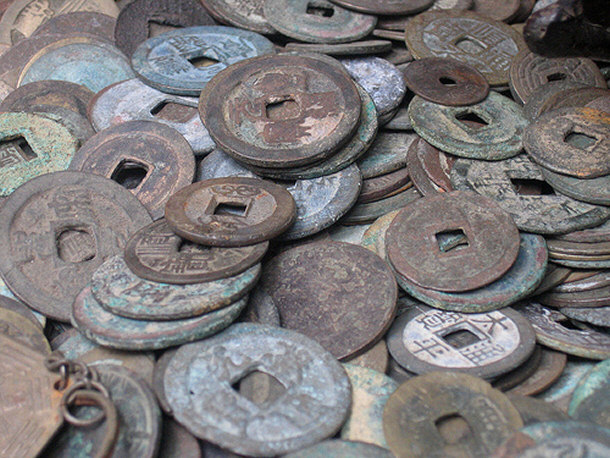
By mc559 (Chinese coins) [CC-BY-SA-2.0],
via Wikimedia Commons
14) The Compass
All campers are familiar with the standard compass. This nifty device allows
travelers to figure out where they are without the need for batteries or any
outside help. The arrow of a compass always points to the north, allowing you to
figure out which direction you are headed toward in case you become lost. Unlike
a lot of other navigational tools, the compass has remained greatly
unchanged in its basic principles. What did change, however, was its purpose. The
compass itself was originally invented to be a tool for divination, or telling
the future.

This divination tool was first invented in the Han Dynasty, dating it
somewhere around 206 BCE. It involved a metal
spoon in a deep basin, and the spoon would spin to point to magnetic north. It
wasn't until around the Song Dynasty and the tenth century that the Chinese
began using the compass for military navigation. Since then, the compass has
primarily been a directional tool used for staying on course. We’d be
interested in anyone who still uses it for divination purposes, and just how they
explain the fact that it always spins to point the same way.
13) Paper and Printing
It's common knowledge that paper originated in China. Scholars and artists
toiled to create beautiful art that is still seen and appreciated throughout the
world. The art of paper crafting was once something that only specialized
crafters in temples were able to do, as the edicts and art that was done on them
was mostly religious in nature. Hemp paper was first invented during Emperor
Wu’s reign, between 140 BCE and 86 BCE. But script paper isn't the only paper
that they invented. They even invented toilet
paper, which was first used in the sixth century. Recorded by Yan Zhitui who was
a scholar, accounts of using tissue paper as early as 589 CE were presented in
his writing. An Arab traveler
further documented it in the year 851 CE.
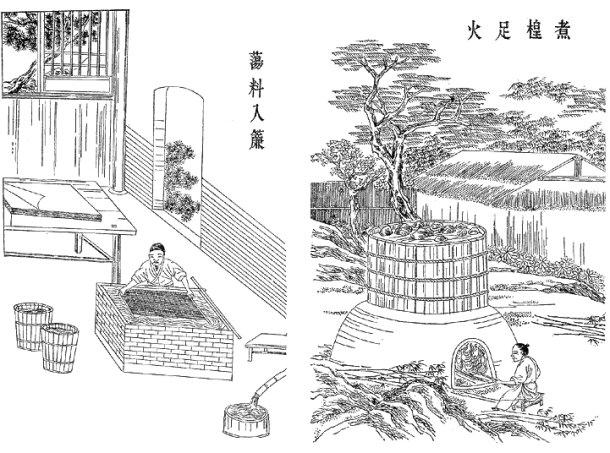
It's no small wonder that printing also originated in China. Originally used
as a way to mass produce items for consumption, printing was originally done on
wood blocks that had ink rolled over them. These blocks were then pressed to
pages in a specific order, much like newspaper printing machines that we are
used to in the United States, but on a much smaller scale. Movable type using ceramic
tablets was invented around 1040 CE, long before Johannes Gutenberg came up with
his printing press.
12) Organized or Row Planting
Around 6 BCE, the Chinese invented organized, or row, planting in efforts to
help their crops grow faster and more effectively. When small villages were
responsible for feeding larger populations, this method proved the best.
Organized planting is essential to optimize plants’ growth and harvesting
potential. It makes it easier to spot weeds, evenly apply water and fertilizer,
and accurately thin plants when needed. Row planting also allows for better wind
pollination and means plants are less damaged by windstorms, as they’re not
thrashing against their neighboring plants quite as badly.

Most people think of organized
planting as traditional single row planting, but while that is effective, there
are a few different types that allow for greater larger diversity of gardening
styles and techniques. Wide row planting is similar to single row planting in
that it requires stakes and string or fencing to create the desired straight
lines. The advantages to wide and single row planting is that it maximizes a
narrow gardening space and ensures plenty of access to each plant, with built in
walkways on the bare soil between each row. Organized planting greatly improved
production and helped populations to avoid famine, as more goods could be stored
for periods when plants, for whatever reason, wouldn’t grow.
11) Boat Rudder
The rudder is what allows boats to steer themselves effectively by using
mechanical pressure and water flow, providing a ship with the ability of
directional control. Before the introduction of the boat rudder, the Western world relied on steering oars
which were only effective for shorter voyages. It was the invention of the rudder by the Chinese that
revolutionized sea exploration, travel, and trade. The earliest rudders were called “balanced rudders”,
and were not utilized by Europeans
until the nineteenth century.

Only later did they invent another kind of rudder,
one with holes in it to make turning it easier, that effectively did the same
job as the original Chinese rudder. Rudders not only made it easier for exploration and other nautical
activities, but were especially useful for any naval maneuvers. The development
of rudders and adoption by the British in particular completely revolutionized
maritime activities. In fact, without a proper rudder, torpedo boats wouldn’t
have been able to break thirty knots when they still relied on sails.
10) Porcelain
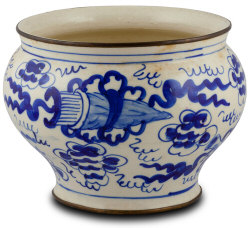 Porcelain
is a functional material, whether you collect rare plates or eat off it. There’s
a reason, though, that you might say, “Break out the good china,”
when you have special guests. That’s because fine porcelain was first
invented by the Chinese, and has a long history of innovation and development -
just like China. Porcelain
is a functional material, whether you collect rare plates or eat off it. There’s
a reason, though, that you might say, “Break out the good china,”
when you have special guests. That’s because fine porcelain was first
invented by the Chinese, and has a long history of innovation and development -
just like China.
Porcelain is essentially a form of pottery, which has its roots as far back
as the Neolithic period, but it was the Chinese that first produced painted
pottery. During the
Han dynasty there was a so called golden age of Chinese pottery. A kiln is
required to produce the extremely hot temperatures required to burn away all of
the impurities in clay, leaving behind the white, ceramic product.
Originally, it was made from white clay found on the banks of the Yangtze.
Glazed and painted pottery is something you still see today.
Pottery has a long history in China, and, throughout many dynasties spanning
hundreds of years, various types of pottery were invented. Ranging from
different glazes to colored celadon, the Chinese continuously came up with new
and highly desired wares. The styles reflected both technological advancements
as well as the contemporary tastes of consumers at a given time resulted in
a long, rich history of pottery.
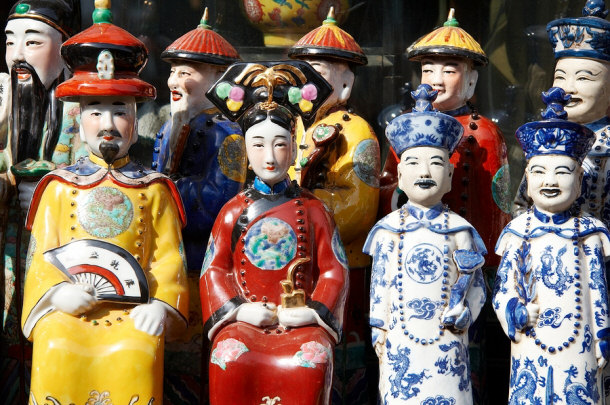
Although you often may find the typical blue and white pattern on china
plates today, ceramics came in a variety of colors and finishes. Certain
dynasties and periods are also known for particular types of pottery. One of the most spectacular types of porcelain was found during
the Sung dynasty, when monochromatic porcelain was produced. Later, more complex
patterns were favored including motifs such as dragons, as well as adopting
richer, more dramatic colors.
9) Iron Plow
 The
iron plow is one of the most important agricultural advancements that has impacted every
country in the world. In a world where farming was once one of the primary
industries for most countries, technological advancements
revolutionized agricultural production and caused major shifts in industry and
the
economy. Many historians believe that the Industrial Revolution would not have occurred without greater food production
that was made possible by the iron plow. It was the introduction of the iron
plow in Holland that started its agricultural
revolution. The Chinese first came up with the idea years before. The
iron plow is one of the most important agricultural advancements that has impacted every
country in the world. In a world where farming was once one of the primary
industries for most countries, technological advancements
revolutionized agricultural production and caused major shifts in industry and
the
economy. Many historians believe that the Industrial Revolution would not have occurred without greater food production
that was made possible by the iron plow. It was the introduction of the iron
plow in Holland that started its agricultural
revolution. The Chinese first came up with the idea years before.
The way that food is grown in long, furrowed rows to this day, especially
rice and soybeans, is a result of the iron plow. The first instance of the iron plow cropped up between 475-221 BCE, during a
period known as the “Warring States Period,” and was referred to as kuan
(moldboard plows). This referred to a particular type of construction and was
far more durable than other designs that Greek and Roman farmers used, which
were made from less sturdy materials.
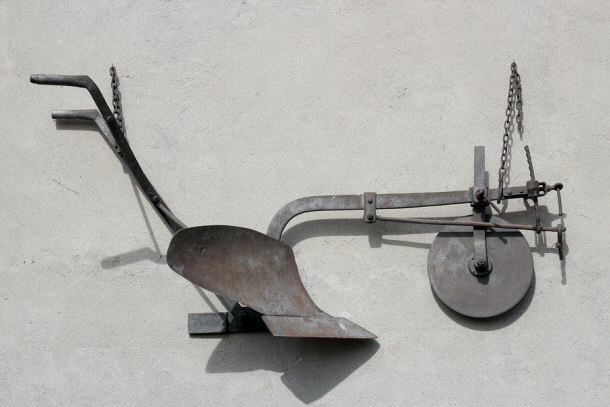
The iron plow also had dramatic impact on the industry of agriculture when it
became available to peasant workers, making the tilling of soil and other tasks
more efficient. The plow was further developed during the Song Dynasty, between 960-1279 BCE. At this stage,
the Chinese had devised a large number of technological advancements in
agriculture and engineering, including the ability to change how deep the furrow
would be by changing the length between the plow and the board used to control
it. These inventions helped China continue to present themselves as one of the
foremost nations of ingenuity.
8) Soccer
Known to most of the world as football, soccer is the world’s most popular
sport. The sport as we know it originated as a kicking
ball game in China. The rules were different and allowed more hands-on ball
handling than is allowed in today's version of the game. There were also up to three teams playing at once,
making it a fairly complex sport. Versions of the game have been around since
Ancient Greek and Roman times. Older versions of the sport often
included more handling of the ball—more like American football and rugby—but
modern rules only allow ball-handling by the goalkeepers. The most influential
rules governing soccer as a whole are the Cambridge Rules, drawn up at Trinity
College in 1848. Although the modern rules of play, called The Laws of the Game, are
still supervised by the International Football Association Board (IFAB), and are
currently supported in Asia by the Asian Football Confederation (AFC).

These laws apply to all soccer matches at every level, though some
modifications have been allowed for children, women, and those with
disabilities. The basic premise is to use footwork to create a goal scoring
opportunity with the football, while keeping the opposing team from gaining
possession of the ball. Interestingly, the goalkeeper or goalie is the only
position designated by the Laws of the Game, though, in modern times, coaches
have assigned strategic outfield positions to aide in scoring.
7) Seismography
Starting out as a renowned astronomer the scientist Zhang Heng is famous not
only for contributions to scientific theory, but the engineering of scientific
instrumentation that is still used today. In 132 CE, he invented the seismograph in
order to track movements of the earth, and help predict the earthquakes that were
ravaging the country. Placed in an area of high seismic activity, the decorative
instrument concealed a sensitive pendulum in a bronze urn beneath a circle of
dragons holding copper balls. When the pendulum swung in response to a shift in
the earth, it put levers and gears in motion that releasing the ball from the
dragon’s mouth into the open mouth of a toad statue sitting below. Examining
which toad held the ball told you the direction of the seismic disturbance.
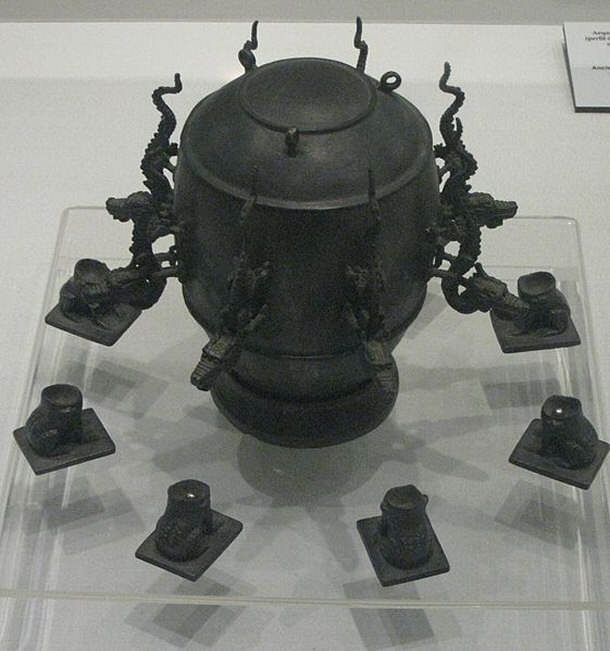
By deror_avi (Own work) [Attribution, CC-BY-SA-3.0 or GFDL],
via Wikimedia Commons
According to Engines of Our Ingenuity by John H. Lienhard, Zhang Heng’s
original design was able to accurately predict an earthquake that occurred 400
miles away from where the instrument itself was placed in court at Jing Shi. Its
mechanical brilliance is without question, as modern seismography—which only
came about around 1880—utilizes the principle of the pendulum that relies on
theories of inertia in much the same way as Zhang Heng’s design.
by John H. Lienhard, Zhang Heng’s
original design was able to accurately predict an earthquake that occurred 400
miles away from where the instrument itself was placed in court at Jing Shi. Its
mechanical brilliance is without question, as modern seismography—which only
came about around 1880—utilizes the principle of the pendulum that relies on
theories of inertia in much the same way as Zhang Heng’s design.
6) Drilling for Resources
With water wheel-powered bellows that gave a continuous uninterrupted stream of
air, China achieved significant advances in metallurgy over two millennia before
Europe and the Middle East. This allowed for the creation of multi-ton iron
drills that could be used in the drilling for natural resources, something that
would not appear in the Western world until Virginian mining in
the 1820s. During the Han dynasty, 180 foot tall derricks stabilized with hemp
and bamboo cables had hand-laid stone guides for drills to stay straight in the
boreholes.

Like modern drill assemblies, hoisting equipment, and a power source
were all present in forms recognized by engineers and laypeople today. The Chinese even developed versions of blow-out preventers, and placed collars
below ground to control erratic pressure and stabilize flow like we do today.
Some drilling could go as far as 4800 feet
deep. Resources such as brine and oil could be pulled up in this fashion. Natural
gas was recovered in a similar process, then flowed through a bamboo pipe
transport system to where it was used as fuel in furnaces to evaporate brine for
its valuable salt, and—as some evidence suggests—create lights.
5) Silk
Silk is a fabric that is known for its feel and sheen. Silk emerged in China around the twenty-seventh
century BCE. The only place in the world that you could get silk was China until
the Silk Road opened for trade. Silk became a sensation and was in extremely
high demand among nobility from all corners of the globe. In China, silk was
used for numerous applications, including writing and art. The color of silk
that a person wore was an important indicator of status in the Tang Dynasty. The
Silk Road trade route brought much adventure and money into China and sparked
many different myths and legends.
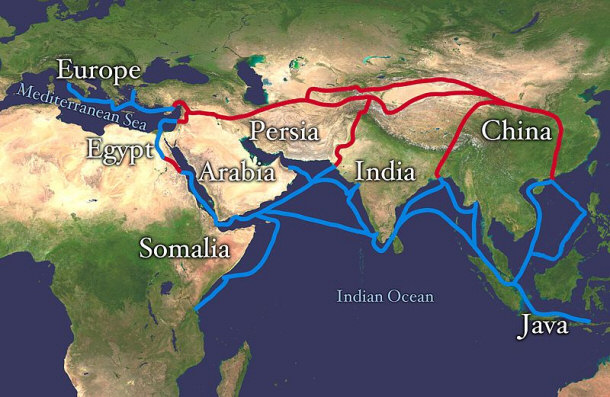
Silk didn't remain solely in China, mostly because of its high demand. Silk
cultivation moved to Japan and then, later, Europe. Though the locations where
silk was produced changed, it continued to be a status symbol and was always in high
demand.
4) Crossbow
A crossbow is a weapon that features a bow mounted on a grip or stock. When
drawn taut, the bowstring is held in place by a mechanism on the stock, and a
trigger allows small arrows—called bolts or quarrels—to be fired. The bolts may
have feathers or “fletching” attached to them, though this is not always
necessary due to the crossbow’s inherent accuracy. The stock and trigger
configuration improves on the uncertainties of classic recurve bows. For
example, the way the archer lets go of the bowstring is no longer a concern due
to the consistent release that the trigger offers. Because of its relative
silence and consistency, the crossbow is a popular weapon today for
sportsmen and hunters.
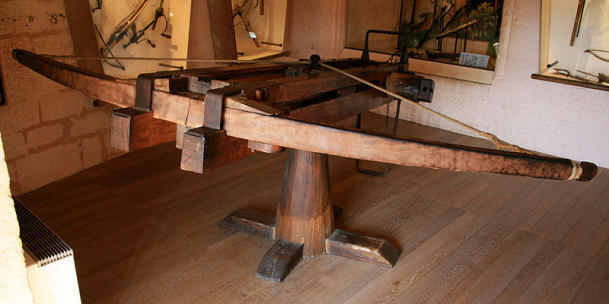
By Sémhur (Own work) [CC-BY-SA-3.0-2.5-2.0-1.0],
via Wikimedia Commons
Though crossbows are believed to have originated in China, there is no
concrete proof. Some of the earliest specimens of crossbows, however, do come
from China. Leonardo da Vinci even designed his own crossbow many years later. Bronze crossbow bolts from as early as the fifth century BCE were found at a
burial site in Hubei. Full-bodied crossbows with stocks and triggers were found
at Qufu, and they are believed to have been created in the sixth century BCE.
3) Forks
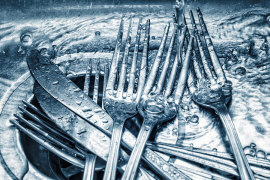 Forks are a familiar dining utensil for most Western cultures, and they are
becoming increasingly more prevalent in Eastern cultures. Their name
comes from the Latin word furca, which means “pitchfork”, in reference to forks’
familiar shape. Surprisingly, they were not common in European cultures until
the 18th century, and they did not gain popularity in America until the 19th
century. This century-long gap may explain why European and American cultures
have different etiquette for holding forks. American etiquette calls for the
fork to be held with the tines curved upward; conversely, European etiquette
demands that the tines curve downward. In both cultures, forks are used for
spearing, carrying, and occasionally cutting food. More advanced etiquette
involves a wide variety of forks for specific uses, such as cocktail, dessert,
and fondue forks. Forks are a familiar dining utensil for most Western cultures, and they are
becoming increasingly more prevalent in Eastern cultures. Their name
comes from the Latin word furca, which means “pitchfork”, in reference to forks’
familiar shape. Surprisingly, they were not common in European cultures until
the 18th century, and they did not gain popularity in America until the 19th
century. This century-long gap may explain why European and American cultures
have different etiquette for holding forks. American etiquette calls for the
fork to be held with the tines curved upward; conversely, European etiquette
demands that the tines curve downward. In both cultures, forks are used for
spearing, carrying, and occasionally cutting food. More advanced etiquette
involves a wide variety of forks for specific uses, such as cocktail, dessert,
and fondue forks.
Despite their more recent popularity, forks are believed to have been created
in the Byzantine Empire. Dr. Needham’s Science and Civilization in China
suggests that forks have been found in Chinese burial sites, dating as far back
as the Qijia Culture. These early forks were carved from bone, and similar
specimens have been found in the tombs of later Chinese dynasties.
2) Gunpowder
Gunpowder, sometimes called black powder, is widely used as a propellant in
firearms and fireworks. It consists of a mixture of sulfur, charcoal, and
saltpeter, and it was the first discovered chemical explosive. Surprisingly, it
is classified as a “low explosive” because of its slow decomposition rate and
low brisance (or shattering capability). This explosive was invented in China by
alchemists, and it is commonly referred to as one of the “Four Great Inventions”
of China. The first documented reference to gunpowder was written by Qing Xuzi
during 808 CE. Though this document did not refer to gunpowder’s explosive
traits, written manuscripts detailing gunpowder’s incendiary properties appeared
as early as the 9th century.
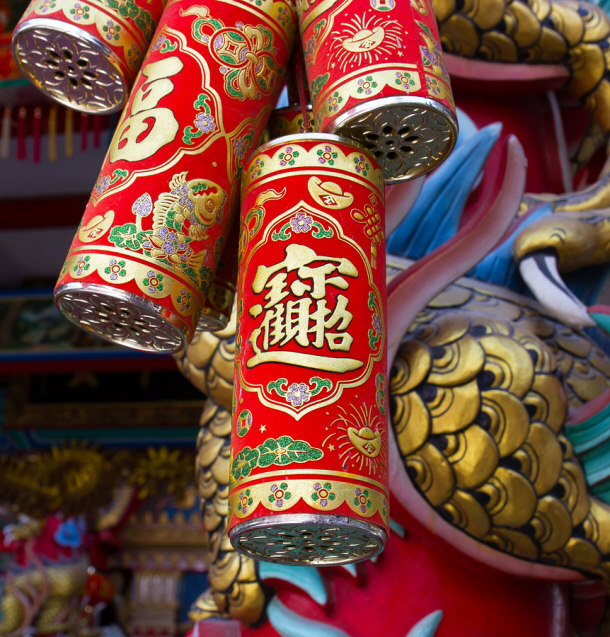
Gunpowder was originally developed as medicine. Its Chinese word, huo yào,
translates literally into “fire medicine.” It is with great irony, then, that
gunpowder became one of the most influential technologies in the history of
warfare, and would account for an extreme amount of death. Chinese military
forces used gunpowder in guns, cannons, and grenades against the Mongols in the
13th century. After they founded the Yuan
Dynasty, the Mongols used similar technology in their attempted invasion of
Japan. These early gunpowder technologies were coupled with later advances
in metallurgy, led to the development of effective, modern artillery. By the seventeenth
century firearms dominated Early Modern warfare, and soon began replacing swords
and spears.
1) Coffins
Coffins are used in burial practices for the deceased all around the
world, and have been in use for centuries. The Chinese developed one of the
earliest forms of the coffin, the “hanging coffin”, a burial technology that is
implemented by the Bo people to this day. The theory behind hanging coffins is
that they are intended to bring the body of the deceased closer to heaven rather
than it would if it were being buried in the ground. The deceased would be taken
out to the mountains, and the coffin would be strung up by a pulley system and
ropes. Once the coffin is hoisted into the intended position, whether it be a
ledge or a cave, the coffin is left there above ground.
Funerary adornments are different for every culture, but right up into modern
day practices, the wealthiest individuals have the most ostentatious burial
displays. Whether a mausoleum, monument or complex headstone, the Chinese were
one of the first cultures to try and reflect the individual persona of the deceased with
appropriate burial indicators.
Chinese "Hanging Coffins"

By PaintedCarpet (Own work) [CC-BY-SA-3.0],
via Wikimedia Commons
Coffins were elaborately decorated, and
personally planned and prepared prior to death by the person whom would
eventually end up in it. Ancient Chinese coffins served the purposes of both
burying someone and displaying their status.
Final Thoughts
Many of the inventions that you attribute to other places got their start in
China. Things such as the compass and plowing have kept their basic principles
since their inception, while others, like soccer, have changed significantly
through the years. One thing that they all have in common is that they are still
commonplace to this day. It's easy to forget, particularly in an age where
French silk and Irish soccer teams are popular. Even the coffin can trace back
to Chinese ancestry. So when you are looking at your compass or helping yourself
to dinner, you can thank ancient Chinese inventors for paving the way.
History
Top Lists:
15 Biggest Architectural Blunders
Top 15 Most Horrifying Terrorist Attacks
15 Fascinating Facts About the Vietnam War
Top 15 Amazing Ancient Egyptian Architecture
20 Little Known Facts About the Titanic
Top 10 Most Creepiest Abandoned Places in the World
26 Interesting Facts About Henry Ford
List of 15 Tough Ancient Warriors Through History
List of 15 Notorious Roman Emperors and Empresses
Top 15 Worst Pandemics in History
15 Things That Remained the Same in the Past 100 Years
Top 15 Things China Invented First
Top 15 Greatest Inventors in History
15 Interesting Facts About Abraham Lincoln
10 Inventors Who Stole Their Ideas
15 Stories of Hilarious Medieval Victories
15 Detectives Credited With Solving The Biggest Cases In History
15 Fascinating Facts About the Ancient Pyramids
15 Inventions That Were the Result of a Mistake
15 Famous Stories of Execution
16 Rare Facts About the U.S. Presidency
15 Astonishing Leadership Stories that Ended up Successfully
Informational:
Analysis of the Linear B tablets and Wall Paintings
Aristophanes and Classical Greek Comedy
The First War of Scottish Independence
|